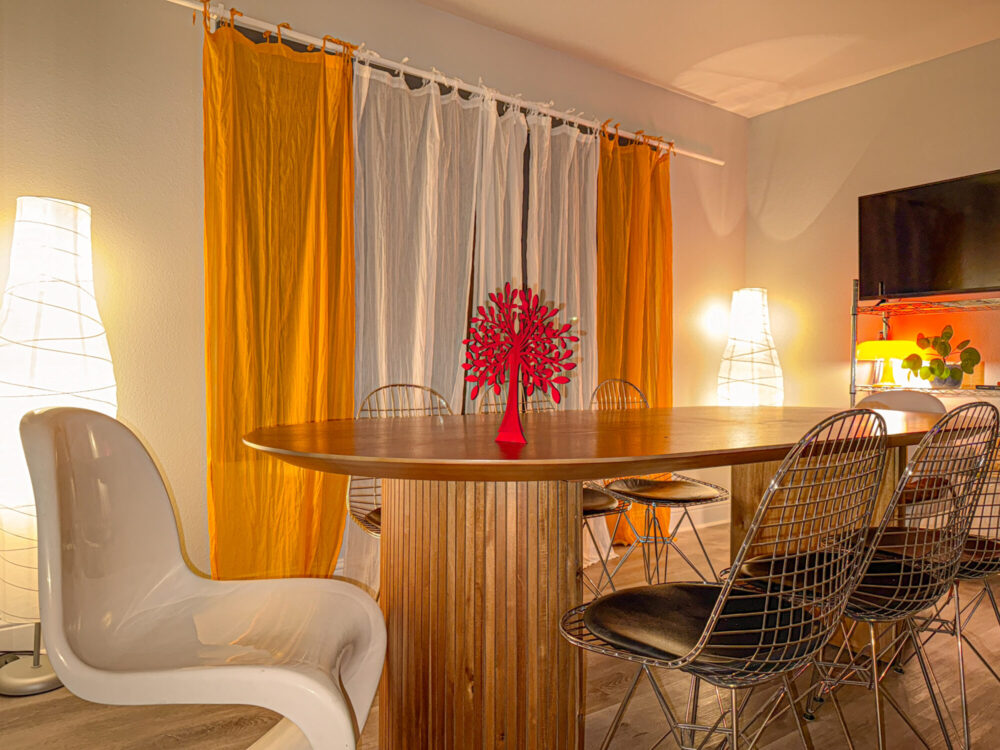
Introduction
The Red Tree Sculpture is proof that up-cycling and digital fabrication can work wonders. This project takes scrap wood, once discarded and forgotten and transforms it into a beautiful, eye-catching art piece that’s both creative and eco-friendly. Inspired by the Unexpected Red Theory, a design idea that highlights red as a bold contrast in neutral spaces, this sculpture shows how sustainability and artistry can go hand in hand.
Through meticulous material selection, digital modeling, laser cutting, and finishing techniques, the project showcases the potential of up-cycling to create aesthetically compelling and functionally stable artwork. This blog post delves into the complete process behind the Laser-Cut Red Tree Sculpture, covering its inspiration, design vision, fabrication, challenges, and final reflections. It also explores potential future improvements and applications of this work, offering insights for fellow creators and enthusiasts.
Inspiration and Vision
What is the Unexpected Red Theory?
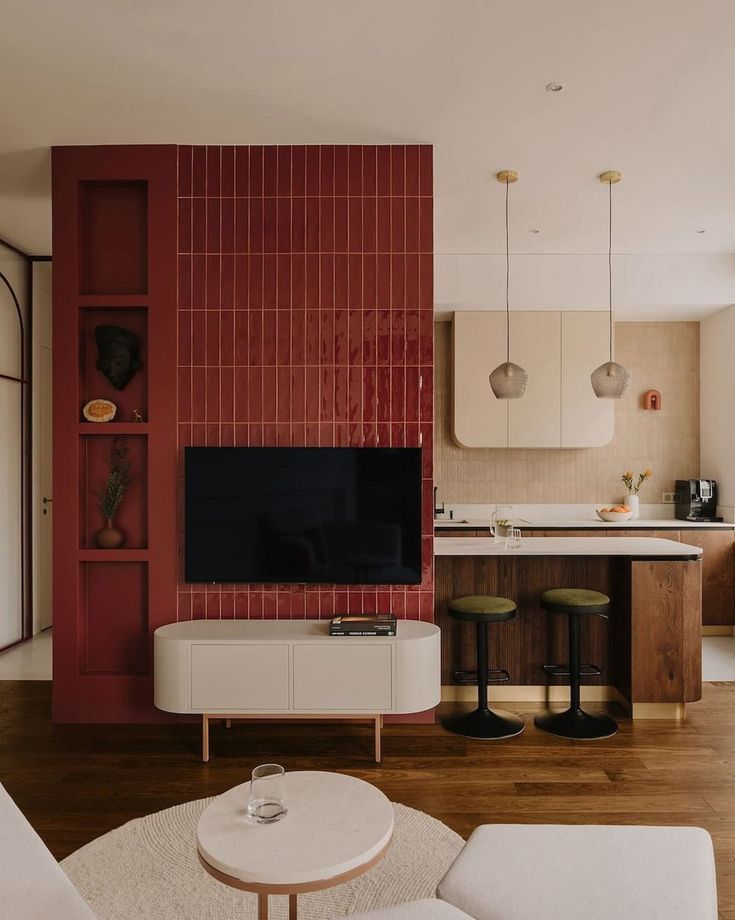
The Unexpected Red Theory is an aesthetic principle rooted in the idea of using strategic placements of red to create contrast and draw attention in otherwise subdued environments. Red, as a color, is psychologically associated with passion, energy, and warmth, making it a powerful tool for disrupting visual monotony. This theory is widely applied in architecture, interior design, and fine arts, where a pop of red can transform a space or object into a focal point.
For this project, the Unexpected Red Theory served as the foundation for the design. By painting the entire sculpture red, I aimed to create a piece that would stand out boldly in any setting, whether placed in a minimalist modern home or a gallery space. The goal was to combine the organic form of a tree with the striking impact of red, resulting in a sculpture that is both natural and avant-garde.
Design and Artistic Goals
The artistic vision for the Laser-Cut Red Tree Sculpture was to create a three-dimensional, freestanding tree that balances delicacy and stability. The design objectives were carefully considered to ensure the final piece would meet both aesthetic and functional criteria:
- Minimalist yet striking composition: The tree’s form is simple and elegant, but the bold red color amplifies its visual impact.
- Organic yet geometric structure: The precision of laser cutting contrasts with the natural, flowing shape of a tree, creating a unique interplay between nature and technology.
- Standalone functionality: The sculpture is designed to stand on its own without additional support, making it a versatile decorative piece.
- Recyclability: The project emphasizes sustainability by using entirely repurposed materials.
- Versatility: The sculpture is adaptable to various interior settings, from modern homes to gallery displays, ensuring its relevance in different contexts.
Materials and Upcycling Approach
Sustainability was a core principle of this project. To maintain an eco-conscious approach, I sourced scrap wood from our local fabrication labs, the idea forge, and the ITL. The materials included:
- Wood panels (1/4” and 1/8” thickness): These were repurposed from discarded used wood prototypes, giving new life to materials that would otherwise go to waste, or recycling.
- Stencil and digital vector drawings: These guided the laser cutting process, ensuring precision and consistency.
- Red concentrate stain and paintbrushes: The stain was chosen for its deep color absorption, which preserves the intricate details of the laser-cut design.
- Clear lacquer finish: This was applied to seal and protect the painted surface while maintaining the natural texture of the wood.
By using reclaimed materials, the project not only reduces waste but also adds a layer of history and character to the final piece. Each piece of wood carries its own story, making the sculpture even more meaningful.
Fabrication Process
Step 1: Digital Design and Preparation
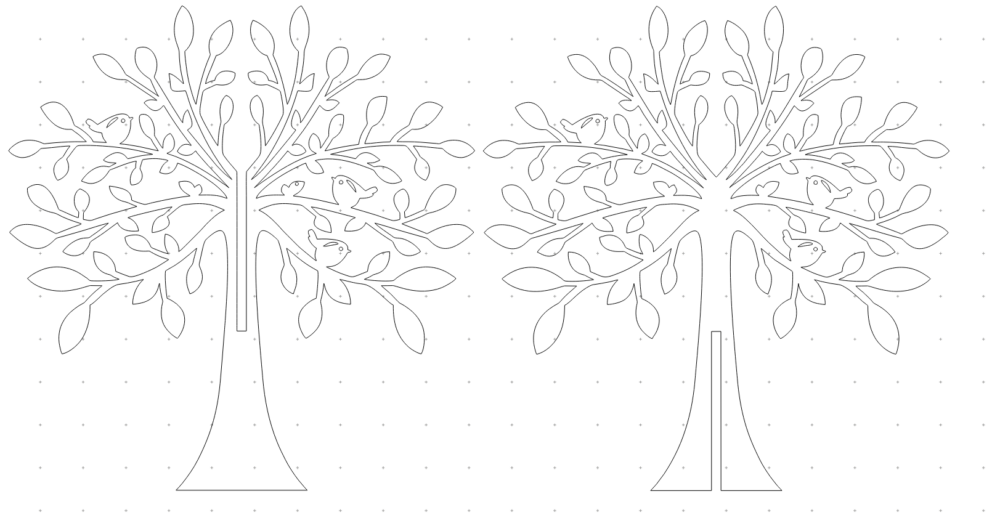
The process began with digital design, a critical step in ensuring the sculpture’s structural integrity and aesthetic balance. I started by searching for tree stencils online, which served as a foundation for the design. Using SolidWorks, I created a 3D model of the tree, refining its shape and proportions to achieve the desired look.
Once the 3D model was complete, I exported 2D vector files to CorelDRAW, a software program used for laser cutting. This step ensured that each component of the tree aligned perfectly, allowing for seamless assembly later. The digital design phase was crucial for identifying potential issues, such as weak points in the structure or areas where the laser cutter might struggle with precision.
Step 2: Laser Cutting

With the design finalized, I moved on to laser cutting, a process that combines precision and efficiency. The laser cutter was set to the following specifications:
- Speed: 15%
- Power: 100%
- DPI: 20%
These settings were chosen to achieve clean cuts without excessive burning. However, some light charring did occur, requiring manual sanding to smooth the edges. To optimize the process, I conducted several test runs on scrap wood samples, adjusting the settings as needed to minimize imperfections.
Step 3: Assembly and Structural Adjustments

The sculpture was designed with interlocking slots, allowing for easy assembly without the need for adhesives or fasteners. After cutting, I conducted a dry fitting to ensure all parts aligned correctly. This step revealed a few challenges:
- Some slots were too tight due to variations in material thickness, requiring slight adjustments.
- The base needed reinforcement to prevent tipping, as the sculpture’s height made it top-heavy.
- Delicate branches occasionally snapped during handling, necessitating careful reinforcement.
These issues were addressed through iterative modifications, ensuring the final piece was both stable and visually cohesive.
Step 4: Painting and Finishing
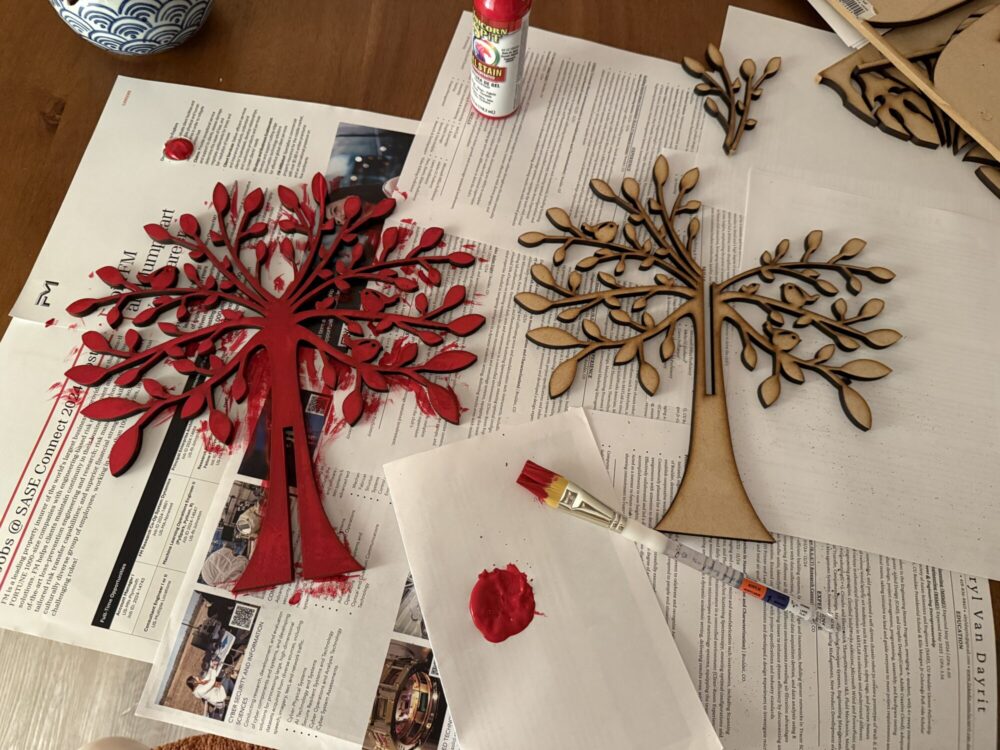
The painting process was a transformative stage, bringing the sculpture to life with its bold red hue. I applied red concentrate stain in multiple thin layers, allowing each coat to dry before adding the next. This approach:
- Enhanced the color’s vibrancy.
- Preserved the intricate details of the laser-cut design.
- Prevented warping by controlling moisture absorption.
Once the stain had dried, I applied a clear lacquer finish to protect the surface and add a subtle sheen. The lacquer also helped to unify the color, ensuring consistency across different wood grains.
Challenges and Points of Failure
Like any creative project, this one came with its share of challenges:
- Laser charring: Despite careful calibration, some edges burned slightly, requiring manual sanding to achieve a smooth finish.
- Delicate branches breaking: The fine details of the tree were prone to snapping during handling, necessitating structural reinforcements.
- Paint absorption inconsistencies: Different wood grains absorbed the stain unevenly, leading to multiple test applications to achieve a uniform color.
- Assembly precision issues: Variations in material thickness caused some slots to be too tight, requiring iterative adjustments.
These challenges were valuable learning experiences, highlighting the importance of adaptability and problem-solving in the creative process.
Final Results and Achievements
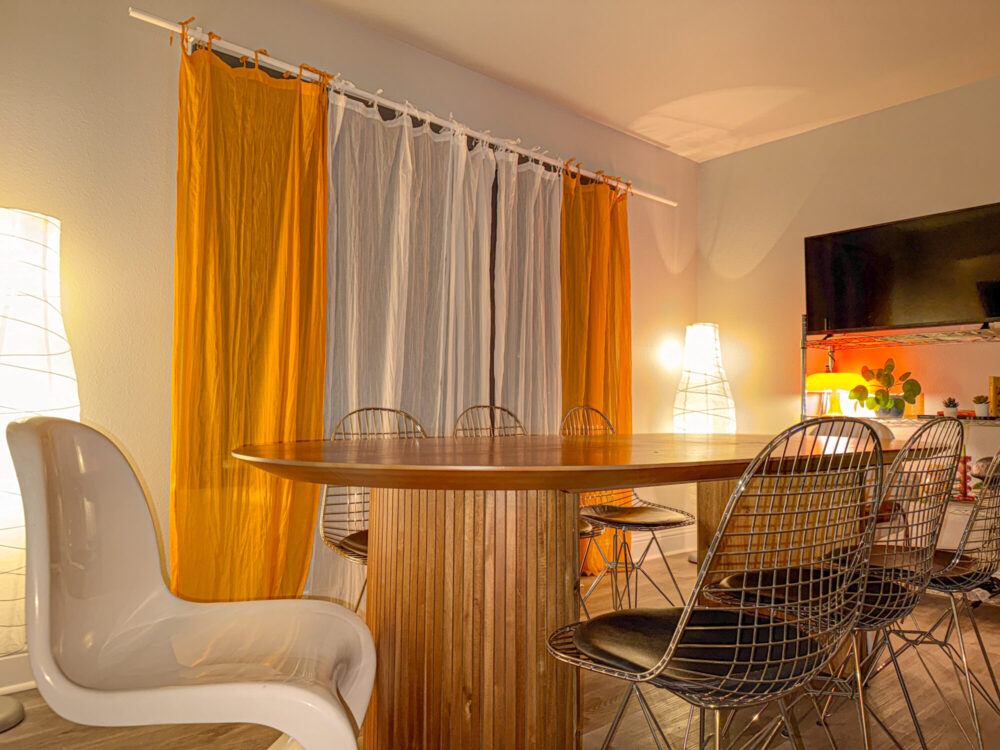
Functional Outcomes
- The sculpture stands independently, fulfilling its design goal of being a freestanding piece.
- Precision laser cutting resulted in clean, defined details that highlight the tree’s organic form.
- The modular slot system allows for easy assembly and disassembly, making the sculpture portable and versatile.
- The lacquer finish provides both protection and visual appeal, ensuring the piece’s longevity.
Aesthetic Outcomes

- The Unexpected Red Theory was effectively applied, creating a visually striking contrast that draws immediate attention.
- The organic shape of the tree was preserved, despite the geometric precision of the laser-cutting process.
- The finish maintained the elegance of natural wood while introducing a modern, artistic twist.
- The sculpture complements a variety of interior styles, from minimalist to eclectic, showcasing its versatility.
Reflection and Future Improvements
This project has been an exciting exploration of upcycling, digital fabrication, and artistic experimentation. It has taught me valuable lessons in design adaptation, material behavior, and precision fabrication, while also reinforcing the importance of sustainability in art and design.
Looking ahead, I plan to explore the following improvements and extensions of this work:
- Experiment with alternative color palettes: For example, using deep blue to explore the “Random Blue Theory.”
- Scale up the design: Creating a larger installation piece for public spaces or galleries.
- Integrate LED lighting: Adding lights to enhance the sculpture’s nighttime aesthetics.
- Try different wood types: Observing how material density affects laser cutting and painting.
- Develop a modular version: Allowing the sculpture to be reconfigured into different display formats.
- Use different finishes: Exploring metallic paints or wood-burning techniques for unique textural effects.
Conclusion
The Laser-Cut Red Tree Sculpture is a celebration of sustainability, innovation, and bold design. By combining reclaimed materials, digital precision, and the Unexpected Red Theory, this project demonstrates how upcycling can lead to impactful and visually compelling artwork.
Beyond its aesthetic and functional achievements, the sculpture serves as a testament to sustainable design thinking and the potential of modern fabrication techniques to breathe new life into discarded materials. It is a reminder that creativity and environmental responsibility can go hand in hand, inspiring others to rethink their approach to art and design.
Featured Images
- Material Selection: Scrap wood pieces before cutting.
- Laser Cutting Process: Intricate detailing being cut.
- Assembly: Dry fitting the tree components.
- Painting: Applying the red stain and witnessing the transformation.
- Final Placement: The finished sculpture in an interior setting vs. without red sculture.
Through this project, I hope to inspire others to explore the intersection of art, technology, and sustainability, creating pieces that are not only beautiful but also meaningful
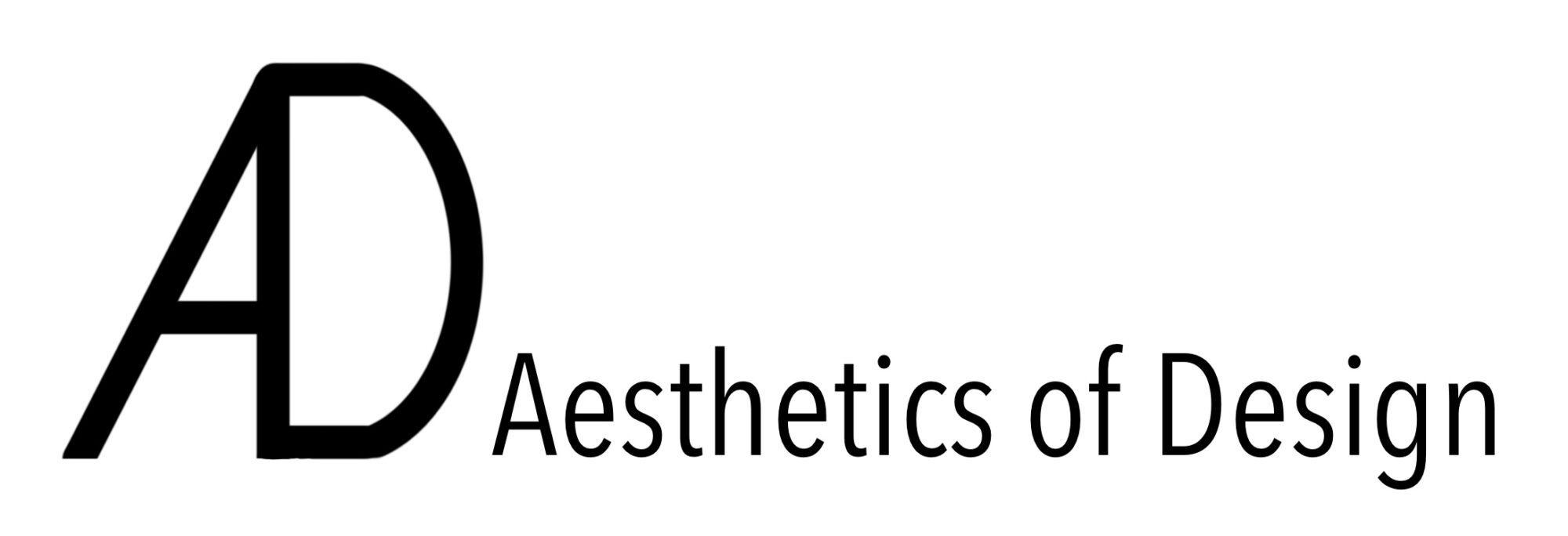
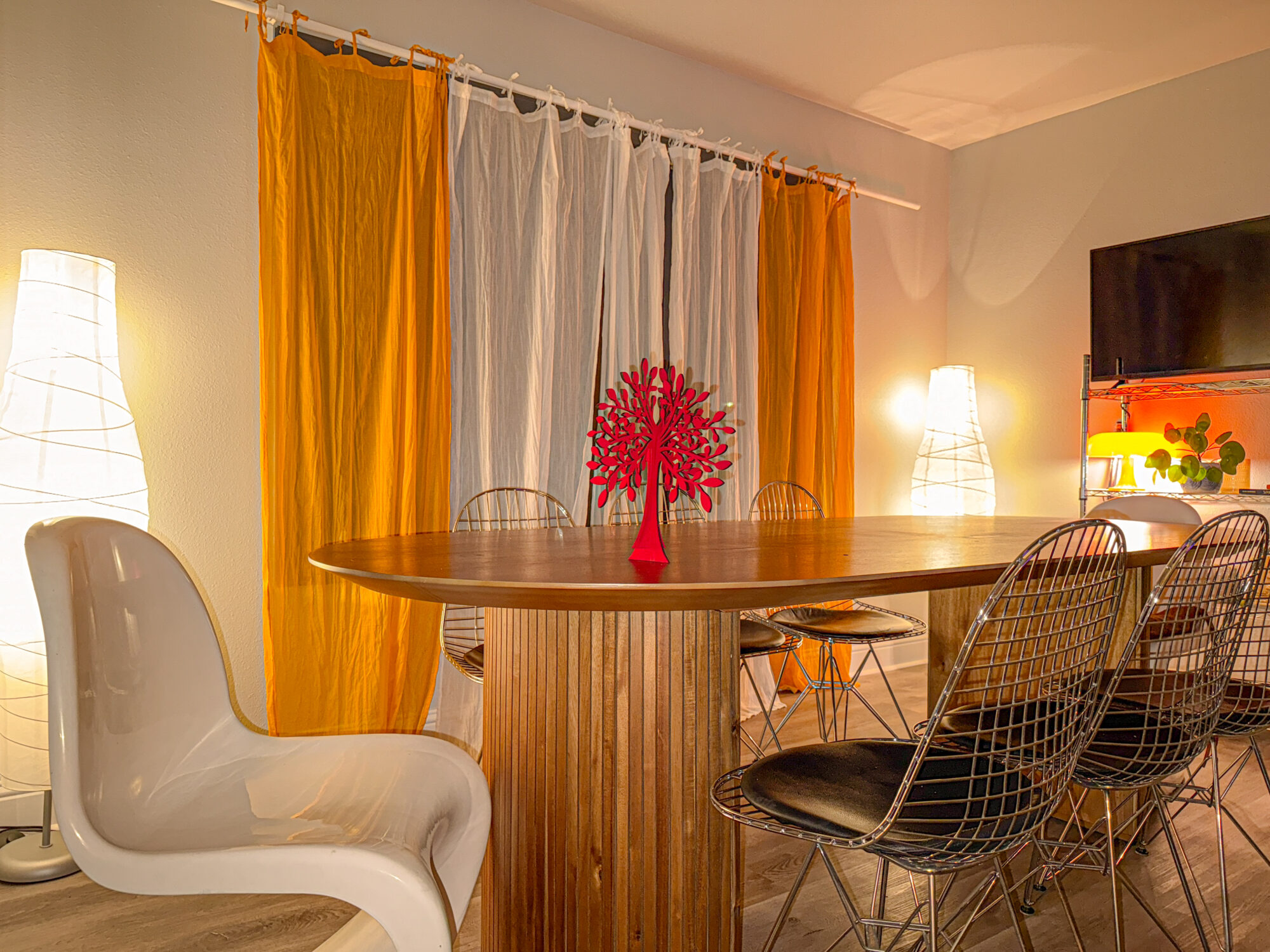
4 Comments. Leave new
Hi! I think this came out super well! The cuts you made with the laser cutter are so clean! Thanks for leaving the information on the settings you used for it. I have a hard time with laser cutting and steer away but yyou seem to have it down! Good job. I think this fits perfect in your living space!
Hello Arden,
Thank you so much for your feedback! It did turn out to be perfect for our dining room
Hey Airyl! I think your tree looks great! I like how well it works with your space and matches your aesthetic. Great work!
Hello Jessica, Thank you for your feedback